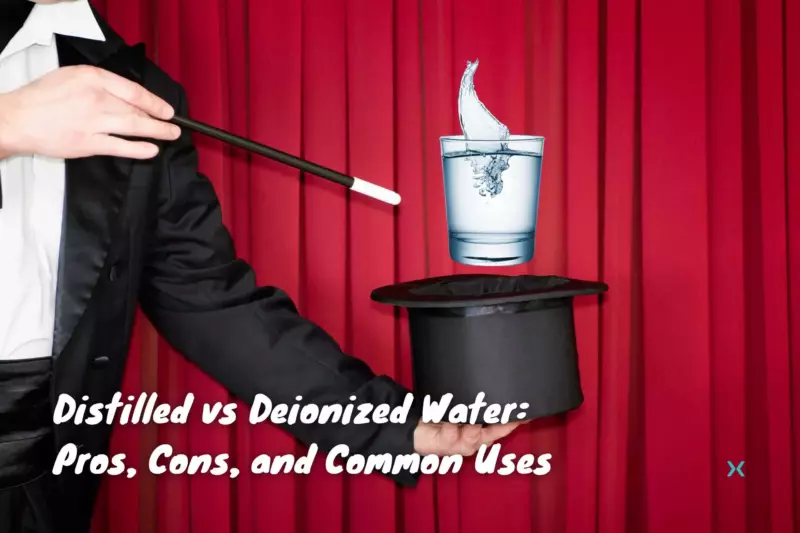💧 Distilled vs Deionized Water
Knowing the difference between deionized and distilled water matters in real-world situations.
Whether you’re in a scientific lab needing pure water for experiments, overseeing industrial operations, or just looking after household appliances, grasping these distinctions is critical.
Your choice between deionized and distilled water can directly impact the success and efficiency of your specific tasks and processes.
Table of Contents
💧 What is Deionized Water?
Deionized water, often abbreviated as DI water, is purified water with nearly all of its mineral ions removed through deionization.
The deionization process involves passing water through a tank or cartridge filled with two oppositely charged resin beds or membranes that selectively attract and capture ions like calcium, magnesium, sodium, and chloride.
These ions are exchanged or removed, producing deionized water with extremely low conductivity and a high purity level, making it suitable for various industrial and scientific applications. It also has some in-home applications.
💧 What Is Deionized Water Used For?
It is commonly used in laboratories for preparing chemical solutions and as a rinse for laboratory glassware to prevent contamination.
Industrial applications such as pharmaceuticals, electronics manufacturing, and power generation rely on deionized water for critical processes, as it minimizes the risk of scale deposits and unwanted chemical reactions that can occur with impure water.
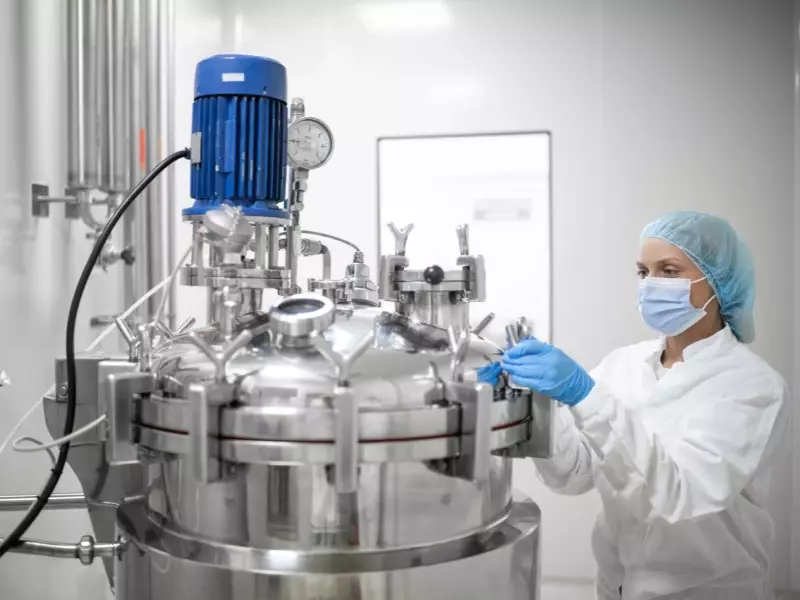
💧 How Does Water Deionization Work?
Water deionizers use an ion exchange process to remove a wide range of ions and minerals such as dissolved solids from water, producing highly purified or deionized water.
Here’s an overview of how deionized water is processed:
- Resin Tank: The deionization system comprises one or more resin tanks filled with tiny resin beads. These beads are specially designed to attract and trap ions from the water.
- Inflow of Raw Water: When raw water, which contains various ions such as calcium, magnesium, sodium, and others, enters the resin tank, the ion exchange process begins.
- Ion Exchange: As the water flows over the resin beads, the ions are attracted to and bind with the resin beads. The exchange of ions occurs, where the ions on the resin beads replace the ions in the water. This effectively removes the ions from the water, leaving it deionized.
- Deionized Water Outflow: The water that exits the resin tank is now deionized, with a significantly reduced ion content. It is suitable for high-purity water applications, such as laboratories, electronics manufacturing, and some industrial processes.
- Regeneration: Over time, the resin beads become saturated with ions and must be regenerated to maintain their deionizing capacity. This is achieved by passing a regeneration solution (typically an acid and a base) through the resin tank, which releases the captured ions from the resin beads.
- Waste Disposal: The wastewater containing the released ions is usually directed to a drain or a separate disposal system. The resin beads are then ready to continue the deionization process.
The deionization system continuously repeats this process to provide a consistent supply of deionized, pure water with nearly all minerals removed.
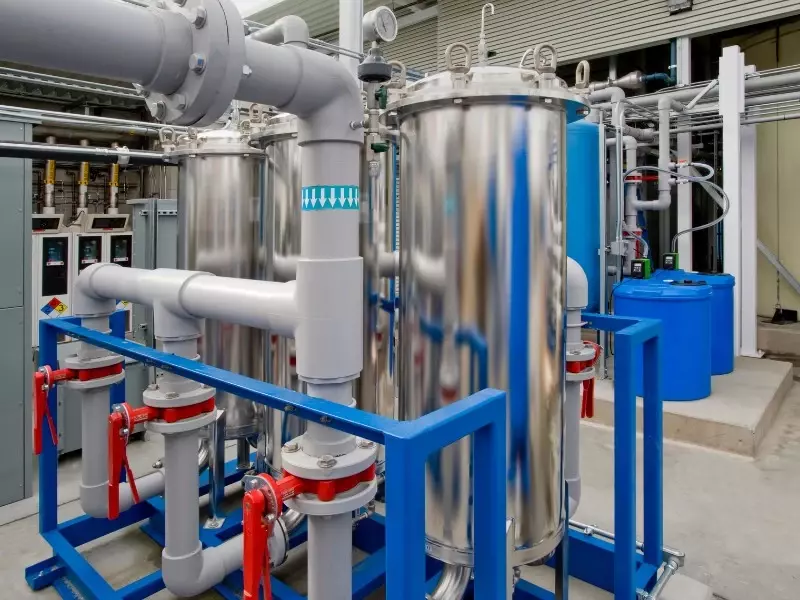
💧 Distilled Vs Deionized Water
Distilled water is another type of purified water that is obtained through a different process.
Water distillation is a purification process that involves heating water to create vapor and then condensing that water vapor back into liquid form.
While distilled and deionized water are highly purified, they differ in removing impurities.
The distillation process primarily removes non-volatile contaminants like bacteria, viruses, and some organic compounds, leaving behind most mineral ions.
In contrast, deionized water focuses on eliminating mineral ions, leaving other impurities intact.
💧 What Should Distilled Water Be Used For?
Distilled water is best suited for applications where the absence of dissolved mineral salts and impurities is crucial.
It’s commonly used in laboratory settings for preparing chemical solutions and in medical equipment like autoclaves and steam irons, where mineral deposits can cause issues.
Distilled water is also suitable for cooling systems and car batteries to prevent mineral buildup.
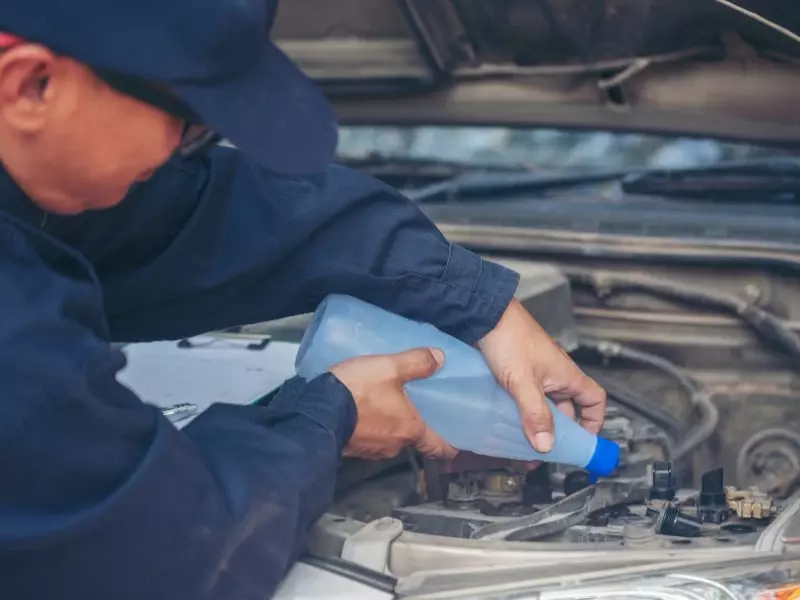
💧 What Should Deionized Water Be Used For In Home?
In a home setting, deionized water can serve a useful purpose as a soft water source.
Deionization removes minerals from water, making it soft and ideal for cleaning glass surfaces, preventing water spots, and extending the life of household appliances such as water heaters, washing machines, and humidifiers.
Distilled and deionized water are suitable for occasional consumption but are not advisable as primary drinking sources.
They lack minerals and contaminants, but this absence of essential minerals may not provide the necessary nutrients, resulting in a flat taste less appealing than other water sources.
For regular hydration and daily drinking needs, tap water or a dedicated water filtration system is preferred.
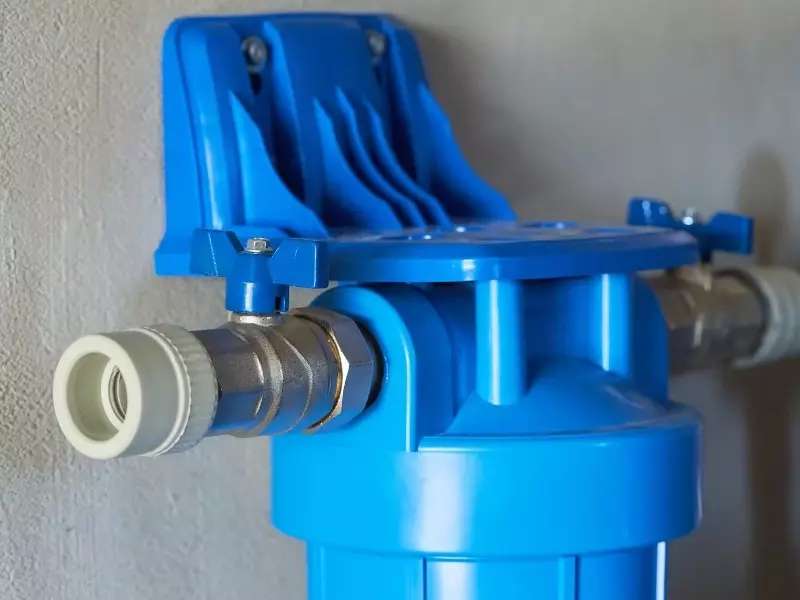
💧 Deionized Water Vs Demineralized water
Demineralized water and deionized water are often used interchangeably, but they are not precisely the same.
Both processes aim to remove minerals from water, but the methods and the extent of mineral removal can differ.
As explained earlier, deionized water primarily focuses on removing ions, specifically cations (positively charged ions) and anions (negatively charged ions).
It employs ion exchange resins or membrane filtration to target these ions, leaving the water highly purified and with minimal conductivity.
Demineralized water, on the other hand, is a broader term that encompasses various methods for reducing mineral content.
While it can involve ion exchange, it may include processes like distillation or reverse osmosis to eliminate minerals and impurities.
In practice, “demineralized” and “deionized” are often used interchangeably, especially in industrial and scientific contexts where highly purified water is required.
However, it’s essential to recognize that the exact method and degree of mineral removal can vary depending on the specific water treatment process employed.
💧 Conclusion

Understanding these differences can help you make informed decisions for your home maintenance needs.
So next time you come across a situation that requires pure water, you’ll know exactly what to choose!
Want to keep empowering yourself with more knowledge about your home?
We’ve got a wealth of articles just waiting for you!
📗 Dive into our plumbing section and continue your journey towards becoming a home maintenance guru.

